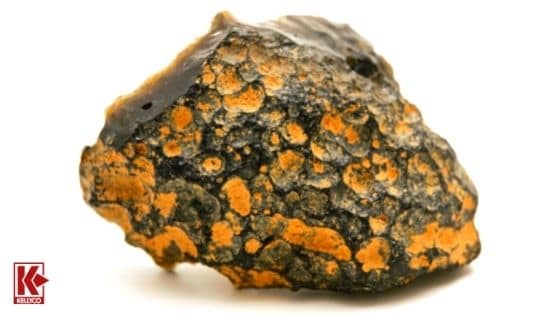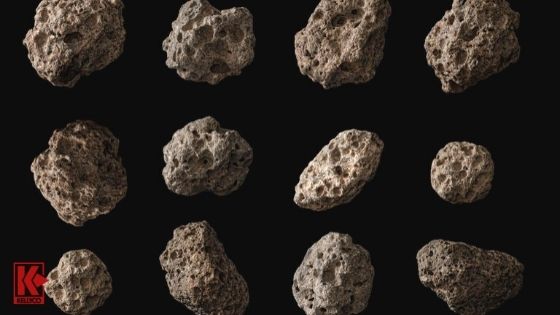Meteorites
Published by Jenna Anderson on 06/24/16
Is it a Meteorite?

Is It A Meteorite?
They come to earth from outer space: ancient pieces of dislodged asteroids and planets that have passed through our solar system and eventually crashed on our soil. To discover one of these amazing space travelers is to hold something valuable in the hand that has never experienced human contact before. Just imagine what it has witnessed in its travels over the last 4.5 billion years. But is it really a meteorite or is it just an ordinary rock indigenous to planet earth?
Meteorites can come in a wide variety of shapes and sizes and their color can range from a rusty and pitted brown to an oxidized and smooth black or gray, or any combination there of. Obviously this makes their identification a difficult task, some samples even requiring some rather costly and time consuming tests. But don’t despair as there are some simple field tests that you can perform on your own to help you to determine whether your discovery is just another ordinary rock from earth or a possible meteorite that has traveled through time and space.
The Hand Test
As you can see it is the specimen’s overall density and consistency that will determine its shape and size and color when it eventually crashes into our soil. So this is the first thing we need to keep in mind when we’re in the field examining potential discoveries. We need to hold the item in our hand so we can judge its density compared to its size and we also need to examine the item’s shape and color. These are some of the first clues that can often suggest the item’s true identity.
- Does the rock feel exceptionally heavy for its size? This might be hard to tell, but it’s only one possible characteristic.
- Is the rock pitted or dimpled?
- What is the rock’s color makeup? A sample with a thin, dark crust (that’s different than the rest of the rock) could be a meteorite.
The Magnetic Test
A second test that can be performed in the field is the simple magnet test. Since meteorites generally possess a high metallic iron content they will likewise readily attract a magnet. Be sure to use a cheap, ceramic magnet and not a fancy rare-earth magnet. While this isn’t a foolproof test it is a fairly reliable test when the suspected rock also possesses one or more of the attributes listed above. Just keep in mind that man has used iron to forge tools and utensils since the beginning of time and that slag and scraps from these past iron works is a fairly common discovery while in the field. Also keep in mind that in certain regions of the country nature iron deposits are quite common, which brings us to our next simple test.
The Tile Test
A third test that can be conducted in the field is the Tile Test. Basically, this just requires a simple piece of ceramic tile, like those that are laid in a bathroom or kitchen. These tiles have two sides, a glazed and smooth side and a rough unfinished side. You’ll want to use the rough and unfinished side for this test. All you’re going to do here is to use your rock in such a way that it creates a streak when dragged across the rough side of the tile. So when conducting this test you’ll want to apply enough pressure to create a firm streak.
If your rock leaves a gray or black streak on the tile then your rock is not a meteorite. The same can be said if your rock leaves a reddish streak as this is a sign that your rock contains hematite, another mineral not found in meteorites. On the other hand, however, if your suspected rock leaves no streak on your ceramic tile then it is possibly a meteorite and it’s time to move on to the next test.
The File Test
This next test requires a file and it is also going to require that you leave a scar on your suspected rock. Unfortunately this test must be conducted so that we can gather a better look at the inner skin of the rock. In most cases this scar won’t hurt the potential of the rock.
If, after filing a spot of the rock flat, you can see small specks and/or streaks of shiny metallic material in the rock then you may have a meteorite. If the content of the rock doesn’t have these streaks or specks then it probably isn’t a meteorite. Most meteorites will contain these metallic properties.
And this is how you can test your suspected meteorites discoveries in the field. Unfortunately, the only way to achieve a 100% identification is by sending the suspected rock off to lab where they have the capabilities to conduct a more thorough and conclusive test. But more than likely, if your suspected space rock passes most of these basic tests, than it is likely that you have discovered a potentially valuable meteorite and an amazing piece of time and space. Hope this article helps, and, “Good luck out there!”
Thank you to the following experts for their help with this article:
Alan Rubin
Institute of Geophysics and Planetary Physics
Department of Earth, Planetary, and Space Sciences
University of California
Dr. Melinda Hutson, curator
Cascadia Meteorite Laboratory
Portland State University
Randy L. Korotev
Research Professor
Department of Earth & Planetary Sciences
Washington University in Saint Louis
Don’t buy fallen stars, find them!
These Aren’t Your Average Treasures.
Meteorites are Older and More Valuable Than Anything Else You Can Dig Up!
When most people think of buried treasure, the image of Spanish gold bars and Pirate’s loot comes to mind, buried hundreds of years ago for safe-keeping. But beneath those traditional treasures and easier to find, lies something much valuable than detecting gold and diamonds combined – and that treasure is meteorites.
What is a Meteorite?

A Meteorite Is More Commonly Known As A Fallen Star Or Moon Rocks
A meteorite is more commonly known as a fallen star or moon rock.
They are pieces of space debris that have landed on the earth’s surface after surviving a fiery journey through the layers of our atmosphere. Each one is unique in shape and size, and is made of either stone or iron. The iron meteorites that lay beneath the surface are heavy and instantly stand out as unusual. The most common meteorites are made primarily of iron and nickel, referred to as “Iron,” “Stony Iron,” or “Chondrite” meteors – and these are the kind that you and your metal detector can find!
Meteorites are Real Treasures!
Meteorites are rarer than gold, platinum, diamonds or emeralds. Owning one is the only way to touch the cosmos, and the demand for such an experience is quite high all over the world! Many have called them the “truest form of black gold,” and they often sell for $300.00 per gram or more – meaning a 1 pound meteorite can be worth a million dollars.
Where can a Meteorite be found? Meteorites are entering the Earth’s atmosphere each day, amounting to more than a hundred tons of material! Fallen meteorites are witnessed about 33% of the time and the rest go unnoticed. According to the data base of the Meteoritical Society, about 1500 verified meteorites have been found in the U.S. in the past 200 years – and with today’s advances in metal detectors, the number goes up every day!
Start at home : 291 meteorites have been found in Texas, 177 in California, 214 in New Mexico, 50 in Nevada, 85 in Arizona, 17 in Alabama, and 136 in Kansas!! Almost every single state in the U.S. has been home to a meteorite at one time – even Hawaii!
The best place to start looking for these valuable rocks is in deserts, if you happen to live close to such an area. Since they are devoid of plant life and rarely have rain, these are great places to look because the meteorite will not weather or erode quickly, and can be found just below surface.
Next are “Strewn Fields” – These are fields that have clearly been the landing place of meteorites and have often been searched by others – but that can be in your favor. With the advances in metal detecting technology, many of the meteorites found today are pieces of ones found years ago.
How Can I Find a Meteorite?
After you’ve picked out a good location and done some research, the first thing you’ll need is a high quality metal detector that can help you find a coveted and valuable meteorite.
Most metal detectors will locate iron, but you’ll want one that covers a large area and penetrates much deeper into the Earth to find the more valuable meteorites. This includes the entire Quantro Sensing line of metal detectors for both land and water, which are specifically geared to locate large iron items and penetrate to great depths. Lorenz metal detectors, especially the Lorenz X5 and/or X6, have been a favorite for a number of Kellyco’s customer’s meteorite discoveries worth tens of thousands of dollars. Other recommended metal detectors for meteorite hunting are Minelab GPX 5000, Minelab’s Safari, E-Trac, and CTX-3030. White’s Spectra VX3, Spectra V3i and MXT All-Pro, Fisher’s F75, Teknetics’s T2 as well as the Garrett GTI 2500 with the depth multiplier. (If you’re not sure what detector to use, please call any of our certified metal detector experts toll free at 1-800-898-6673 & 1-800-327-9697).
It has been reported that scientists have successfully found meteorites in the cold depths of Antarctica thanks to the help of metal detectors. Some have felt that the ability to ground balance or cancel out the dominate background rock has been the most important improvement to metal detecting technology over the years, and has allowed them to find meteorites in glacial moraines. Thanks to the help of a metal detector, twenty meteorites were found in only four hours of searching in Antarctica.
Several Kellyco customers have spent years dedicated to finding meteorites right here in America, and our good friend Murry Crowe at Mojo Outdoors found one that weighed 49 pounds! He later recovered 9 others in the same area with his Lorenz DeepMax III purchased from Kellyco Metal Detectors. (Latest Model : Lorenz Deepmax Z1).
Many meteorite hunters have found this to be much more than just a hobby, and have become very serious meteorite hunters. Among the legendary stories that many hobbyist share there is one of a hunter who grossed over a half million dollars in meteorites found around the world. One such meteorite was sold for $50,000 in auction.
How Can I Tell if I Found One?
Most metals found on Earth are either man-made or a meteorite.

Piece Of Metal Without Holes
A piece of metal without holes or bubbles in it may be a meteorite. If you think you’ve found one but aren’t sure, rub your find on a piece of unfinished ceramic tile. If the streak is red, the mineral is hematite and not a meteorite. If you don’t have any ceramic tile lying around, try to break a piece of your find off. If it is a meteorite, it will be similar to naturally-occurring steel, and you probably won’t be able to break it no matter how hard you try.
